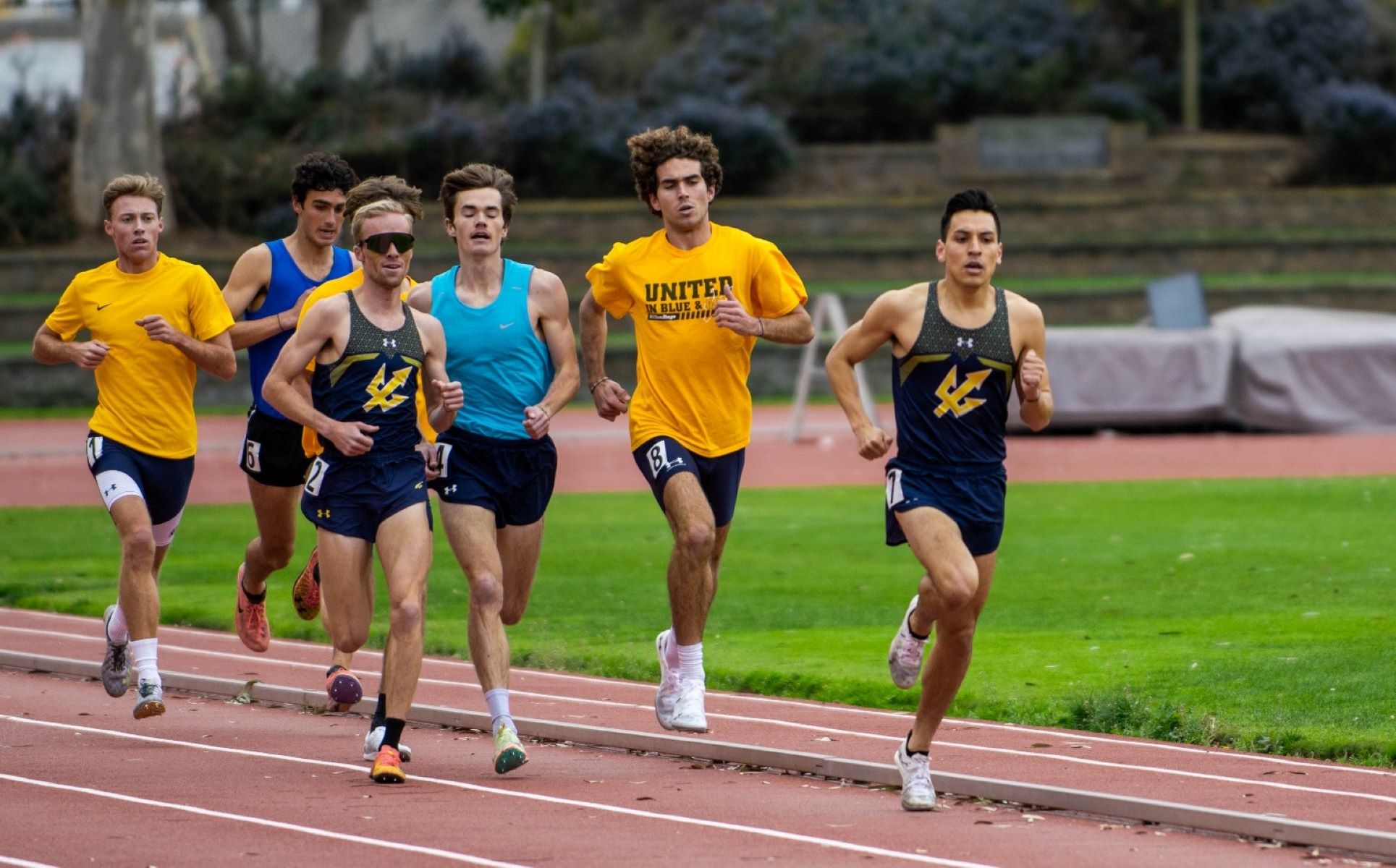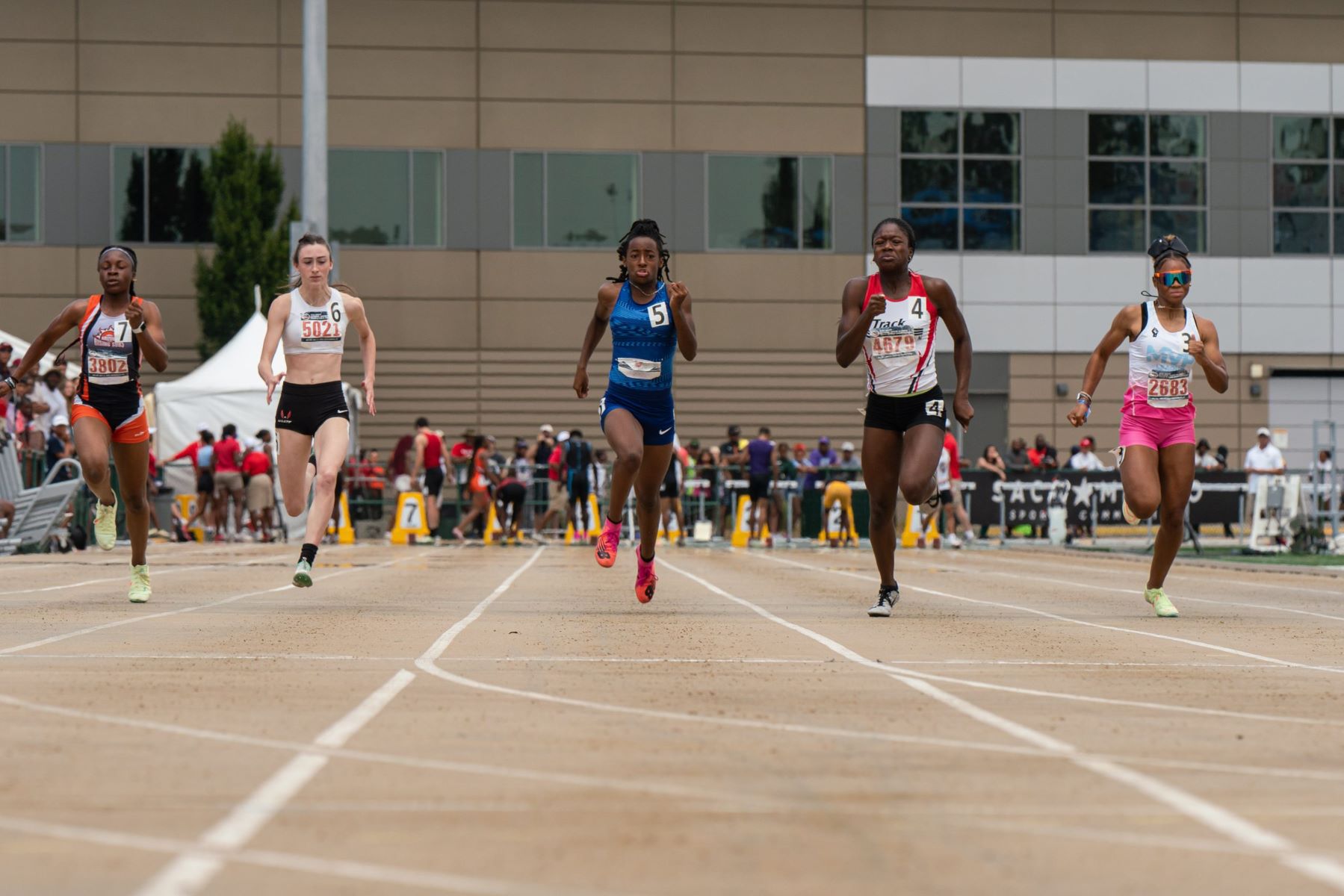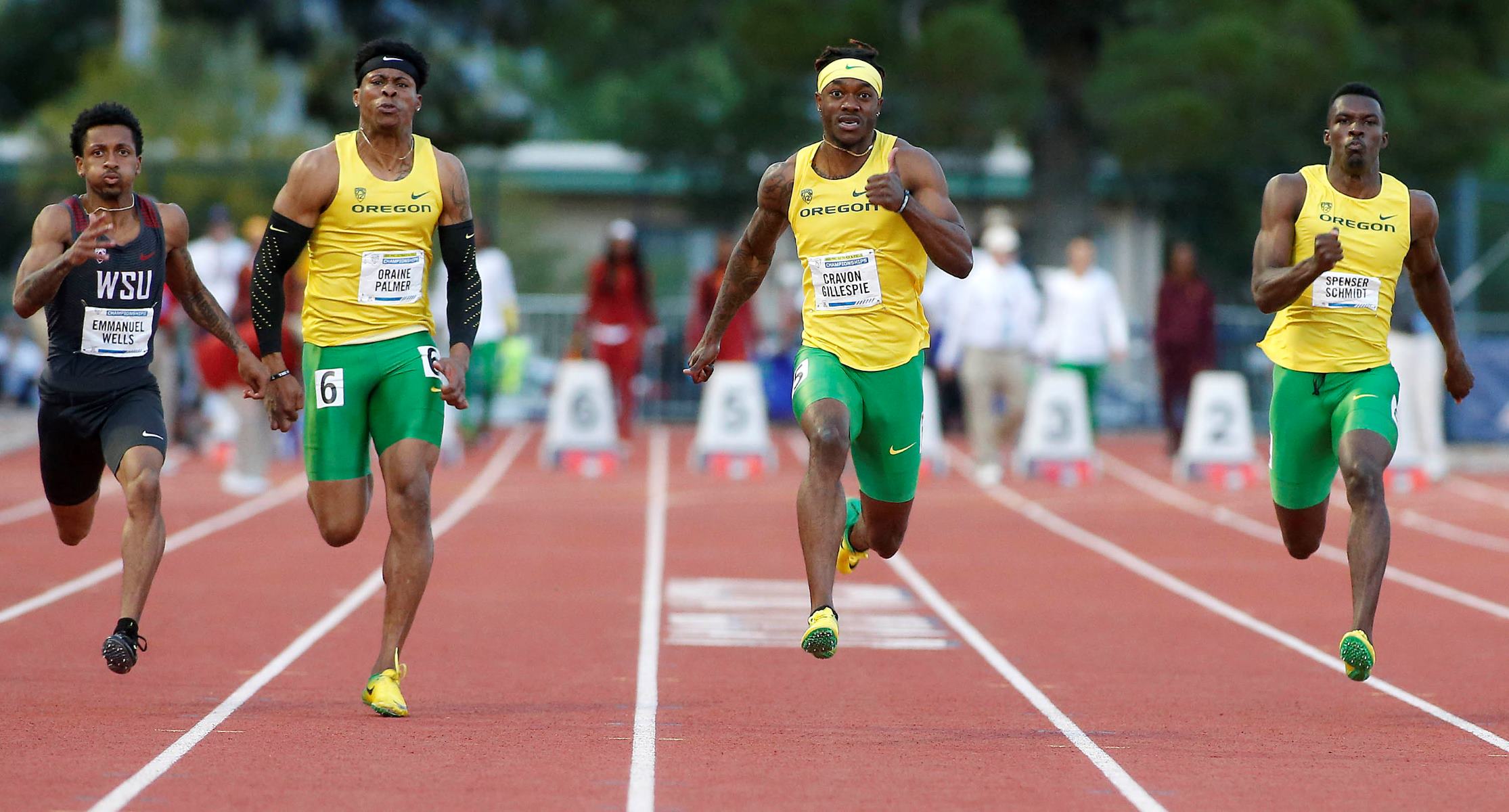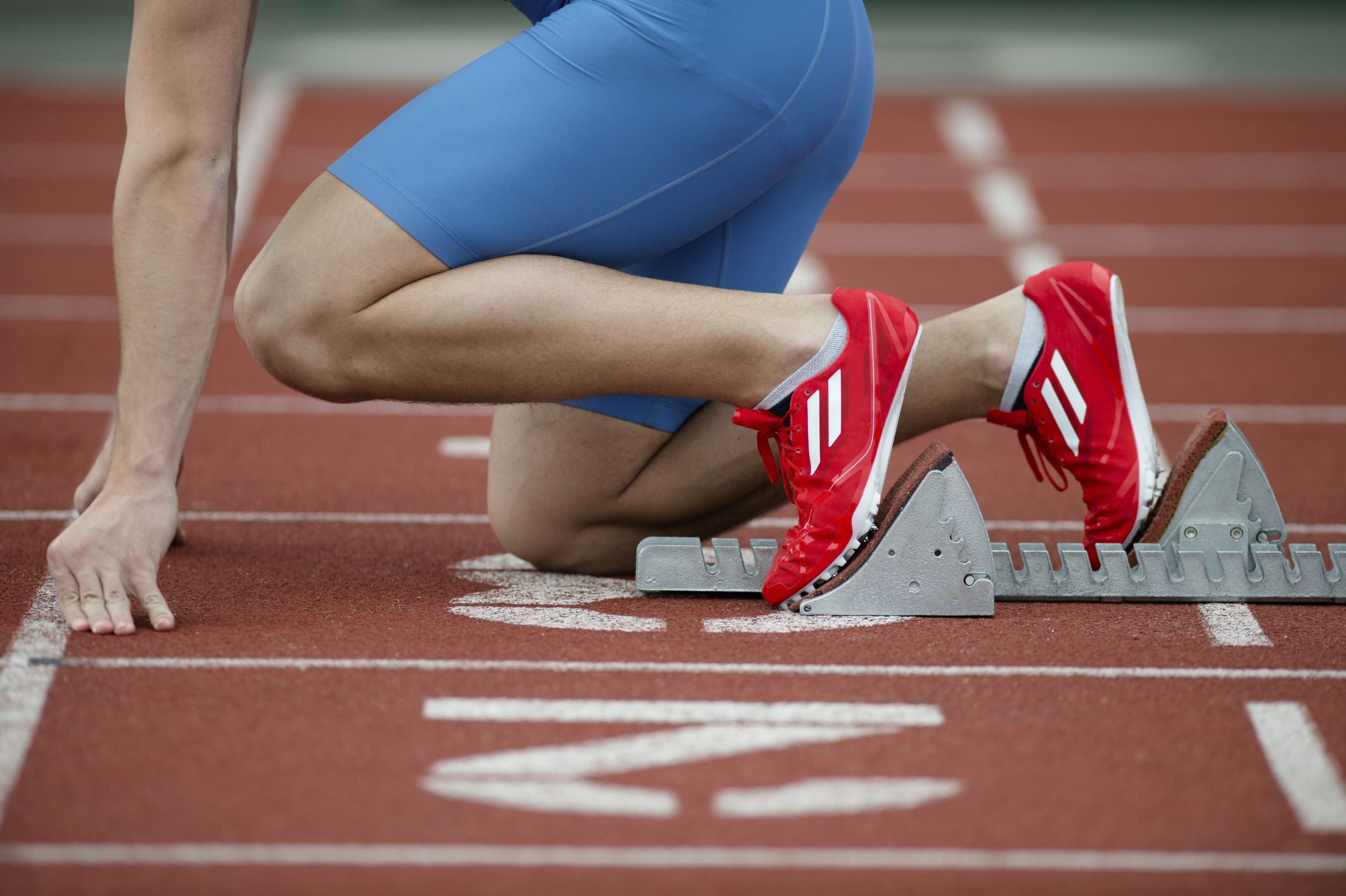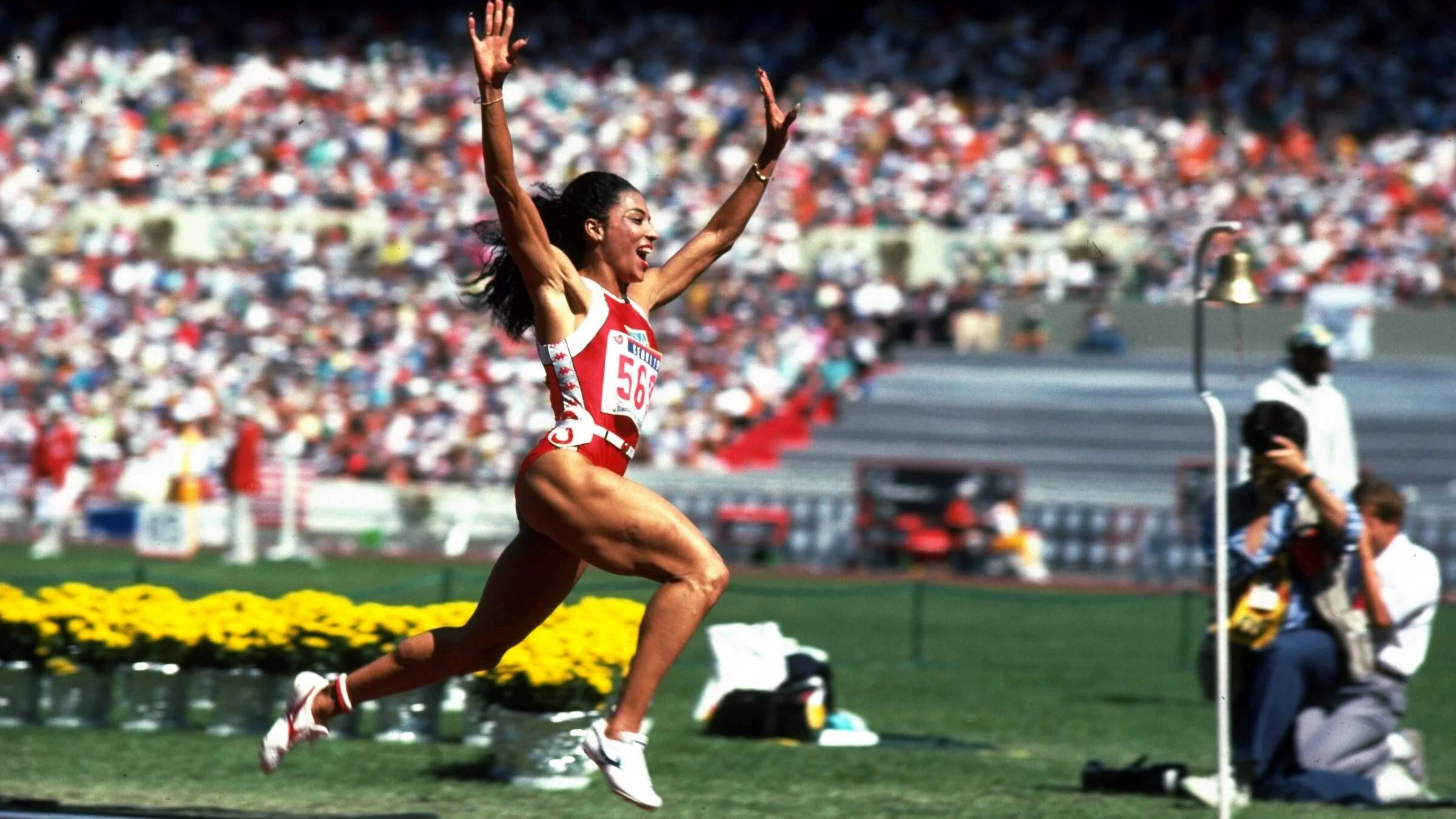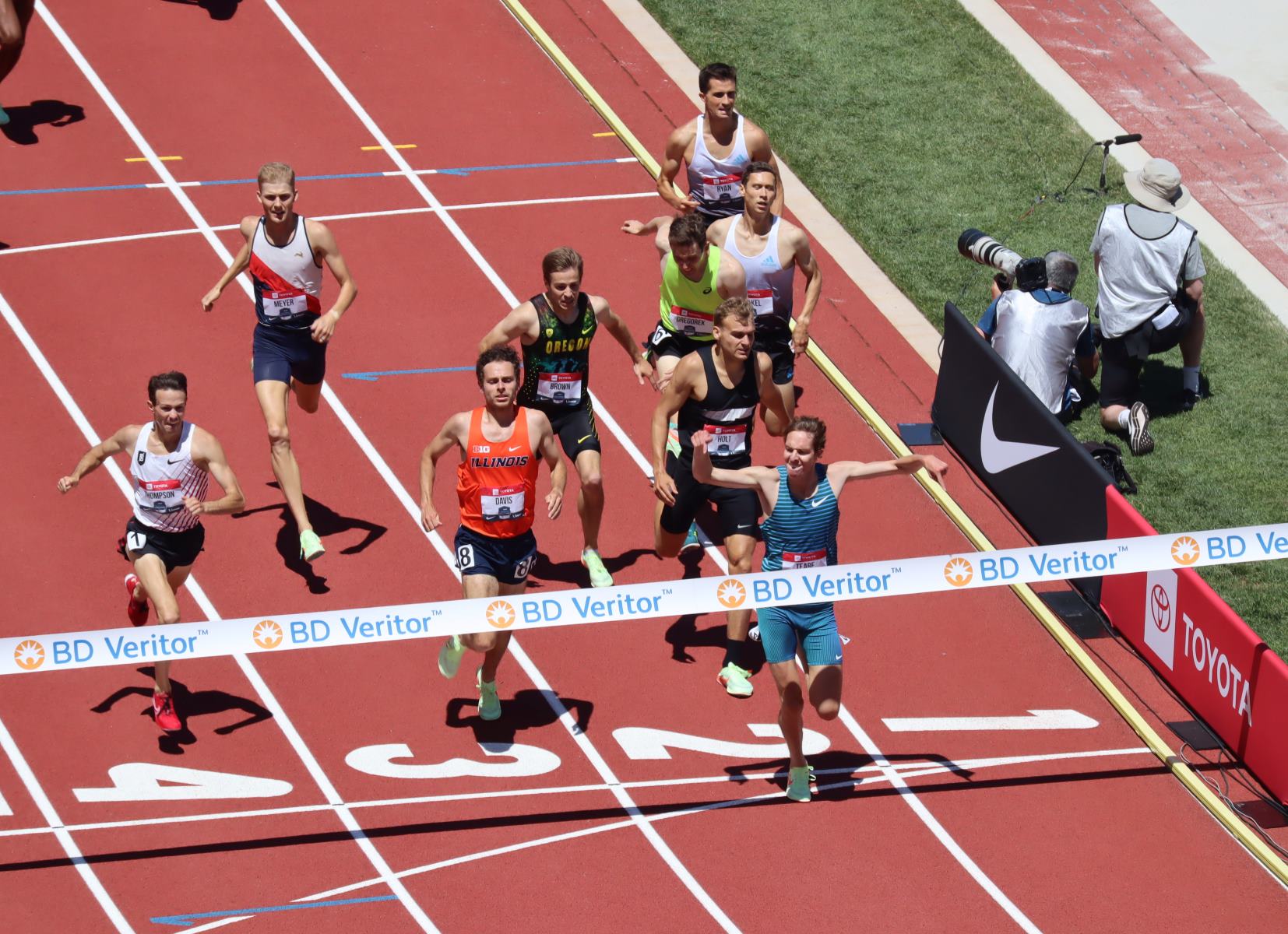

Featured
What Does Track And Field Do
Modified: January 1, 2024
Discover what track and field athletes are capable of in our comprehensive guide. Featured events, training techniques, and more!
Introduction
Track and field is a sport that has captured the attention of athletes and spectators alike for centuries. It is a diverse sport that encompasses various events, including sprints, hurdles, long jump, high jump, shot put, discus throw, javelin throw, and many more. Whether you are a participant or a spectator, track and field offers exhilarating moments of athleticism, grit, and determination.
Track and field has a rich history that dates back to ancient times. It was one of the original sports in the Olympic Games held in ancient Greece, showcasing the physical prowess and strength of athletes. Over the years, track and field has evolved, adapting new events and techniques to push the boundaries of human performance.
The sport of track and field is not just limited to professional athletes. It is widely practiced at schools and universities, attracting young athletes who want to experience the thrill of competition and push their own limits. Track and field provides a platform for individuals to showcase their speed, agility, strength, and endurance, making it a truly comprehensive sport.
One of the great aspects of track and field is the variety of events it offers. From the explosive speed of the sprints to the grace and precision of the pole vault, each event demands a unique set of skills and techniques. This makes track and field an exciting sport to compete in and watch, as different athletes excel in different events.
In this article, we will delve into the history, events, training techniques, equipment, and competitions of track and field. We will also explore the numerous physical and mental benefits of participating in this sport. Get ready to dive into the fascinating world of track and field and discover why it continues to captivate athletes and fans alike.
History of Track and Field
The history of track and field can be traced back to ancient times, with the sport having its roots in the athletic contests of the ancient Greeks. The Olympic Games, held in Olympia, Greece, were one of the first organized sporting events to feature track and field events. These games showcased the physical prowess and strength of athletes, with competitions such as the sprint, long jump, and discus throw.
Track and field remained popular in ancient Greece and continued to be a significant part of the Olympic Games. However, the sport faced a decline during the Middle Ages, with many athletic traditions being lost or forgotten. It wasn’t until the 19th century that track and field began to regain its popularity.
In 1896, the modern Olympic Games were revived in Athens, Greece, and track and field was once again included as a central event. This marked the beginning of the modern era of track and field, with the sport gaining increased recognition and participation around the world.
Over the years, track and field has witnessed significant developments and innovations. New events were added to the Olympic Games, including the high jump, pole vault, and javelin throw, expanding the range of disciplines within the sport. Athletics associations and federations were also established, creating standardized rules and regulations for competitions.
One of the major milestones in the history of track and field was the formation of the International Association of Athletics Federations (IAAF) in 1912. The IAAF became the global governing body for the sport, overseeing international competitions and establishing world records. Today, the IAAF is known as World Athletics and continues to play a vital role in the development and promotion of track and field.
In recent years, track and field has witnessed incredible achievements and breakthroughs. Athletes like Usain Bolt, Carl Lewis, and Florence Griffith-Joyner have set new records and captivated audiences around the world with their extraordinary talent and speed. The sport continues to evolve with advancements in training techniques, sports science, and technology, pushing athletes to new heights of performance.
Track and field has come a long way since its humble origins in ancient Greece. It has become a global sport, captivating audiences with its thrilling competitions and inspiring athletes to strive for greatness. The history of track and field serves as a testament to the enduring power and appeal of this athletic discipline, and its legacy continues to shape the sport to this day.
Events in Track and Field
Track and field encompasses a wide range of diverse events that challenge athletes in different ways. From explosive sprints to graceful jumps and precise throws, each event requires a unique combination of speed, strength, technique, and endurance. Let’s explore some of the main events in track and field:
- Sprints: The sprint events are all about speed and power. The most popular sprint distances are the 100m, 200m, and 400m. Athletes explode out of the starting blocks, aiming to be the first to cross the finish line. These events require incredible acceleration, agility, and maximum effort.
- Hurdles: Hurdles combine speed and agility with the ability to clear a series of barriers. In hurdle events, athletes sprint over a set distance while jumping over evenly spaced hurdles. The 110m hurdles and 400m hurdles are standard distances in track and field. Athletes must maintain their speed while efficiently clearing each hurdle.
- Middle-Distance and Long-Distance: Middle-distance and long-distance events test an athlete’s endurance as they cover greater distances. These events include the 800m, 1500m, 5000m, and 10,000m races. Athletes need a combination of speed, stamina, and strategic pacing to excel in these events.
- Relays: Relays involve teams of four athletes each, who take turns running a set distance before passing the baton to the next teammate. The most common relay distances are the 4x100m and 4x400m. Relays require seamless baton exchanges and strong teamwork.
- Jumping Events: Track and field includes several jumping events that challenge an athlete’s leaping ability. The long jump and triple jump involve athletes sprinting down a runway and jumping as far as possible into a sandpit. The high jump, on the other hand, focuses on clearing a bar without knocking it off.
- Throwing Events: Throwing events in track and field consist of the shot put, discus throw, hammer throw, and javelin throw. Athletes showcase their strength and technique as they launch these objects as far as possible. The shot put involves throwing a heavy metal ball, while the discus throw requires athletes to spin and release a heavy disc.
Each track and field event offers its own unique challenges and rewards. Athletes specialize in specific events based on their skills, physical attributes, and personal preferences. Whether it’s the explosive power of sprints, the precision of jumps, or the strength of throws, track and field events showcase the immense capabilities of athletes in different disciplines.
These events are not only thrilling to watch but also require immense dedication and training from athletes. From the explosive bursts of speed in sprints to the finesse and technique of jumps and throws, track and field offers something for everyone, making it a captivating and dynamic sport.
Training and Techniques in Track and Field
Track and field athletes are known for their exceptional strength, speed, endurance, and technique. Achieving peak performance in this sport requires a comprehensive training program that focuses on developing these key areas. Let’s explore some of the training methods and techniques used in track and field:
- Sprint Training: Sprinters focus on explosive speed and power. They engage in specialized workouts aimed at improving their acceleration, stride length, and overall sprinting technique. This includes interval training, plyometrics, and resistance exercises to build leg strength.
- Hurdle Technique: Hurdle runners work on perfecting their technique to efficiently clear each hurdle. This involves practicing the proper stride length, arm movements, and rhythm to maintain speed while smoothly clearing the barriers. Endurance training is also crucial to maintain speed throughout the race.
- Endurance Training: Middle-distance and long-distance runners focus on building their aerobic capacity and improving their endurance. This involves incorporating long runs, interval training, and tempo runs into their training regimen. They also focus on pacing strategies to effectively manage energy throughout the race.
- Jumping Technique: Jumpers in track and field work on their approach, take-off, and landing techniques to maximize their distance or height. Coaches help athletes fine-tune their jumps, ensuring the correct angles and body positioning for optimal performance. Strength training is also vital to improve power and explosiveness.
- Throwing Technique: Throwers in track and field work on perfecting their technique for shot put, discus, hammer throw, and javelin throw. They focus on footwork, body positioning, and timing to generate maximum force and distance. Strength training is crucial to develop the necessary power and explosiveness required for throwing events.
- Strength and Conditioning: All track and field athletes engage in strength and conditioning exercises to improve overall physical performance. This includes weightlifting, plyometrics, core exercises, and functional training to develop power, speed, and stability. Proper nutrition and hydration are also emphasized to support training and recovery.
Coaches play a vital role in track and field, guiding athletes in their training and technique refinement. They evaluate performance, provide feedback, and develop personalized training plans to address individual strengths and areas for improvement.
Additionally, athletes also rely on sports science and technology to enhance their training. They utilize tools such as video analysis, motion capture, and wearable devices to track performance metrics, identify areas of improvement, and monitor progress over time.
Consistency, dedication, and discipline are essential in track and field training. Athletes must follow a structured training program, balancing intense workouts with proper rest and recovery. They also need to listen to their bodies, addressing any injuries or imbalances to prevent long-term damage.
Training in track and field goes beyond physical preparation. Mental fortitude, focus, and resilience are equally important to succeed in this sport. Athletes often incorporate mental training techniques such as visualization, goal setting, and positive self-talk to improve performance and stay motivated.
In summary, track and field training is a comprehensive process that requires athletes to focus on developing specific skills, strength, endurance, and technique. By following a structured training program, utilizing coaching expertise, incorporating sports science, and maintaining mental resilience, athletes can strive to reach their full potential in this exhilarating sport.
Track and Field Equipment
Track and field athletes rely on specialized equipment to maximize their performance and ensure fair competition. From shoes to implements, the equipment used in this sport plays a crucial role in both the safety and success of athletes. Let’s explore some of the key equipment used in track and field:
- Running Shoes: Proper footwear is essential for track and field athletes. Sprinters opt for lightweight, spike-embedded shoes that provide traction and stability. Middle-distance and long-distance runners prefer shoes with cushioning and support for endurance. Different shoe designs cater to specific events to ensure optimal performance and reduce the risk of injury.
- Starting Blocks: Sprinters use starting blocks to achieve a powerful, explosive start. These adjustable blocks allow athletes to position their feet in the most advantageous way, providing leverage and stability for a fast and efficient start. Starting blocks are an essential tool for sprinters aiming to shave off precious time from their races.
- Hurdles: Hurdles are essential equipment for athletes competing in hurdle events. Hurdles are specially designed obstacles made of lightweight materials such as wood or synthetic materials. They come in various heights, depending on the event, and are placed at measured distances along the track. Hurdles are designed to be easily cleared while minimizing the risk of injury.
- Jumps Equipment: The jumping events in track and field require specific equipment. Long jump and triple jumpers use a runway and a take-off board to launch themselves into the sandpit. High jumpers rely on a bar suspended between two uprights, which can be adjusted to different heights based on the athletes’ skill levels.
- Throwing Implements: Throwing events in track and field rely on specialized implements. Shot putters use a heavy metal ball called a shot, while discus throwers use a round disc made of wood, plastic, or metal. Javelin throwers use a long spear-like implement made of lightweight materials such as carbon fiber.
- Timing and Measurement Devices: Accurate measurement and timing are crucial in track and field. Sophisticated timing devices, including electronic timing systems and photo finish cameras, ensure precise measurement of race times. Measurement tapes and laser devices are used to determine the distance of jumps and throws, providing accurate results.
- Training Aids: Various training aids are used by track and field athletes to improve performance. These can include resistance bands, agility ladders, cones, hurdles, and strength training equipment. These aids help athletes develop speed, power, agility, and strength, allowing them to fine-tune their technique and improve their overall performance.
The equipment used in track and field is essential for athletes to perform at their best and ensure fair competition. Athletes should carefully select and maintain their equipment to ensure optimal performance and reduce the risk of injuries. Regular inspections and replacements are necessary to ensure that all equipment meets safety standards and is in good working condition.
It’s important to note that while equipment is vital, the skill, technique, and physical capabilities of the athlete still play the most significant role in achieving success in track and field. Equipment serves as a tool to enhance performance, but it is the athlete’s hard work, dedication, and talent that ultimately determine their results on the track and field.
Track and Field Competitions
Track and field competitions provide a thrilling showcase of athleticism, talent, and determination. From local meets to international championships, these events bring athletes from all around the world together to test their skills and push their limits. Let’s explore some of the main track and field competitions:
- Olympic Games: The Olympic Games are the most prestigious and highly anticipated track and field competitions. Held every four years, athletes from around the globe gather to represent their countries and compete for gold, silver, and bronze medals. The Olympic Games provide a platform for athletes to showcase their talents, break records, and cement their names in sports history.
- World Championships: World Athletics Championships are held every two years, bringing together the best track and field athletes from around the world. These competitions feature a wide range of events, including sprints, hurdles, long jump, high jump, throwing events, and more. Athletes strive to capture world titles and set new records.
- Continental Championships: Continental championships, such as the European Championships, Asian Games, African Games, Pan American Games, and Oceania Athletics Championships, provide opportunities for athletes to compete at a regional level. These events showcase the talent and diversity within each continent and serve as qualifying events for global competitions.
- Diamond League: The Diamond League is an annual track and field series that features the world’s best athletes across several events. It consists of multiple prestigious meets held at different locations around the globe, culminating in a final where athletes compete for the Diamond Trophy. The Diamond League offers elite competition and attracts top athletes from around the world.
- National and Collegiate Championships: National championships are held in each country, showcasing the best athletes from the respective nation. Collegiate or university-level championships, such as the NCAA Championships in the United States, provide a platform for student-athletes to compete against their peers and demonstrate their skills.
- Invitational Meets: Invitational meets are events that attract high-profile athletes who are invited to compete based on their performances and reputation. These meets offer a competitive atmosphere and often feature headline matchups that capture the attention of track and field enthusiasts.
- Local and Regional Meets: Track and field also involves grassroots competitions at local and regional levels. These meets provide opportunities for aspiring athletes to gain experience, improve their skills, and measure their progress. They serve as stepping stones for athletes aiming to compete at higher levels.
Track and field competitions offer not only a chance for athletes to demonstrate their physical abilities but also an opportunity for cultural exchange, camaraderie, and sportsmanship. These events bring athletes from different backgrounds together, fostering a sense of unity and appreciation for the sport.
Furthermore, track and field competitions are thrilling to watch for spectators. The electrifying atmosphere, the intense rivalries, and the awe-inspiring performances create an unforgettable experience. Whether witnessing a sprinter break the world record or a high jumper soaring to new heights, track and field competitions showcase the incredible capabilities of the human body.
Track and field competitions play a pivotal role in the development of the sport, inspiring future generations of athletes and igniting a passion for athletics around the world. These events provide a stage for athletes to shine and leave a lasting impact on the sport’s history.
Benefits of Track and Field
Track and field offers a wide array of physical, mental, and social benefits for athletes of all ages and abilities. Participating in this sport not only enhances physical fitness but also instills valuable life skills and fosters personal growth. Let’s delve into some of the key benefits of track and field:
- Physical Fitness: Track and field training involves a combination of cardiovascular exercise, strength training, and flexibility work. Sprinting, jumping, throwing, and running events target different muscle groups, improving overall strength, endurance, and agility. Regular participation in track and field helps athletes develop a lean body composition, excellent cardiovascular health, and increased muscular strength and power.
- Mental Well-being: Engaging in track and field has a positive impact on mental health. Physical activity stimulates the release of endorphins, promoting feelings of happiness and reducing stress levels. Regular exercise through track and field can also improve sleep quality, boost self-confidence, and enhance overall mental well-being.
- Discipline and Goal Setting: Track and field require discipline, dedication, and goal-setting. Athletes must adhere to a structured training program, maintain a healthy lifestyle, and prioritize their commitments. By setting measurable goals and working towards them, athletes learn the value of perseverance, time management, and personal accountability.
- Teamwork and Camaraderie: While track and field is often perceived as an individual sport, athletes still benefit from a sense of camaraderie and teamwork through relay events and training alongside teammates. Track and field fosters a supportive and collaborative environment, where athletes can learn to appreciate and celebrate each other’s successes.
- Character Development: Track and field is a sport that demands resilience, determination, and mental toughness. Athletes learn to overcome setbacks, bounce back from failures, and develop a strong work ethic. These qualities translate not only to the sport but also to other areas of life, making track and field a powerful platform for character development.
- Goal Achievement: Track and field offers opportunities for athletes to set and achieve personal goals. Whether it’s breaking a personal record, qualifying for a higher-level competition, or reaching the podium, track and field provides a tangible measure of progress and accomplishment. These experiences of goal achievement boost self-esteem, foster a growth mindset, and inspire athletes to strive for excellence.
- Transferable Skills: The skills developed in track and field are transferable to various facets of life. Athletes learn important life skills such as discipline, time management, resilience, and teamwork, which can be applied to academic pursuits, careers, and personal relationships. The commitment and focus cultivated through track and field can propel athletes to succeed in all aspects of life.
Regardless of age or ability, track and field offers a multitude of benefits that extend beyond athletic performance. The sport promotes physical well-being, mental strength, character development, and the cultivation of important life skills. Whether competing at the highest level or participating for personal enjoyment, track and field has the power to positively shape the lives of those involved.
Famous Track and Field Athletes
Throughout history, track and field has produced numerous legendary athletes who have made an indelible mark on the sport. These individuals have achieved extraordinary feats, shattered records, and inspired generations of athletes. Let’s take a look at some of the most famous track and field athletes:
- Usain Bolt: Considered the greatest sprinter of all time, Usain Bolt from Jamaica is a living legend in track and field. His accomplishments include multiple Olympic and World Championship gold medals in the 100m, 200m, and 4x100m relay events. Bolt’s electrifying speed, charismatic personality, and record-breaking performances have earned him global recognition.
- Carl Lewis: Carl Lewis of the United States dominated the track and field scene in the 1980s and 1990s. He won numerous Olympic gold medals in events like the 100m, 200m, and long jump, showcasing his versatility and athletic prowess. Lewis’ long jump world record stood for over two decades, solidifying his place as one of the legends of the sport.
- Florence Griffith-Joyner: Known as “Flo-Jo,” Florence Griffith-Joyner was a mesmerizing sprinter from the United States. She set world records in the 100m and 200m events that still stand today. Her flamboyant style, flowing mane, and incredible speed captivated fans worldwide, making her an iconic figure in track and field history.
- Jesse Owens: Jesse Owens, an American track and field athlete, made history at the 1936 Berlin Olympics. Despite facing racial discrimination, Owens won four gold medals, claiming victory in the 100m, 200m, long jump, and 4x100m relay. His performances shattered Adolf Hitler’s notion of Aryan supremacy, inspiring a generation and leaving an enduring legacy.
- Wilma Rudolph: Wilma Rudolph was an American sprinter who became a symbol of perseverance and determination. Overcoming childhood illness and adversity, she won three gold medals in the 1960 Olympics, triumphing in the 100m, 200m, and 4x100m relay events. Rudolph’s achievements paved the way for future generations of female athletes.
- Sergey Bubka: Sergey Bubka, a pole vaulter from Ukraine, is regarded as one of the greatest pole vaulters in history. He held the world record for the event for over a decade and won multiple World Championship and Olympic titles. Bubka’s dominance and technical proficiency revolutionized the pole vault event.
- Jackie Joyner-Kersee: Jackie Joyner-Kersee, an American athlete, is widely regarded as one of the greatest heptathletes of all time. She won multiple Olympic and World Championship titles in the heptathlon and long jump. Joyner-Kersee’s versatility, consistency, and longevity in multiple events solidify her status as an iconic figure in track and field.
These are just a few of the many legendary athletes who have shaped the track and field landscape. Their impressive achievements, dedication, and contributions have elevated the sport and inspired countless individuals to pursue their athletic dreams.
It’s important to note that track and field is a sport that continues to produce exceptional talent. New stars emerge, break records, and redefine what is possible. The legacy of famous track and field athletes serves as a source of inspiration, reminding aspiring athletes that greatness can be achieved through hard work, dedication, and a relentless pursuit of excellence.
Conclusion
Track and field is a captivating sport that embodies the essence of athleticism, discipline, and determination. From its ancient origins to the modern era, the sport has evolved and grown, captivating athletes and spectators alike. The rich history, diverse events, rigorous training, specialized equipment, and thrilling competitions all contribute to the enduring appeal of track and field.
Participating in track and field offers a multitude of benefits, both physical and mental. Athletes develop strength, speed, endurance, and agility, while also cultivating essential life skills such as discipline, goal setting, teamwork, and resilience. The sport fosters character development and empowers individuals to push their boundaries, achieve personal goals, and excel in various aspects of life.
Throughout history, track and field has witnessed the rise of legendary athletes who have etched their names in the annals of sports history. From Usain Bolt’s lightning fast sprints to Carl Lewis’ majestic long jumps, these athletes have inspired generations and pushed the boundaries of human performance.
Track and field competitions, whether at the Olympic Games, World Championships, or local meets, provide a stage for athletes to showcase their talents, challenge themselves, and create memories that last a lifetime. The exhilarating atmosphere, electrifying performances, and moments of triumph make track and field a spectacle that captivates fans around the world.
As track and field continues to evolve, incorporating advancements in training techniques, sports science, and technology, the sport is poised to reach new heights. New records will be set, new stars will rise, and the legacy of the sport will continue to inspire future generations of athletes.
Whether you’re a participant, a fan, or simply someone who appreciates the beauty of human athleticism, track and field offers a world of excitement, inspiration, and endless possibilities. So, let us embrace the spirit of track and field, marvel at the boundless potential of the human body, and continue to celebrate this extraordinary sport.

